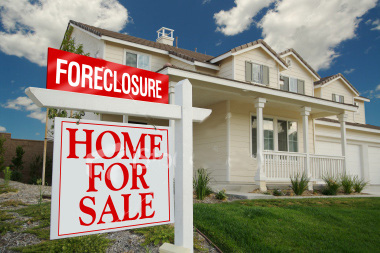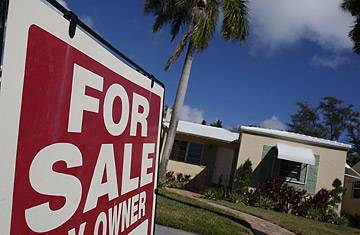- Image via Wikipedia
According to recent reports and forecasts by housing analysts, the three-year descent in home prices appears to be at an end. Eight cities, including San Francisco, showed price increases in May, up from four in April, and one in March, according to Standard and Poor’s/Case-Shiller Index. For the first time since early 2007, the index of 20 major cities was virtually flat, rather than down.
KEEP THIS IN MIND
• Earlier reports show that sales of existing homes nationwide rose last month for the third consecutive month, while sales of new homes increased in June by the largest percentage in eight years, according to the NATIONAL ASSOCIATION OF REALTORS® (NAR) and the U.S. Commerce Dept., respectively.
• Although some skeptics believe the market is pausing before home prices decline further, the median price in California’s housing market appears to be stabilizing. June marked the fourth consecutive month of rising home prices and the second largest gain on record for the month of June, based on statistics dating back to 1979. The year-to-year decline in June also was the smallest in the past 16 months.
• The S&P/Case-Shiller price index for 20 cities showed a half-percent gain when May was compared with April. It was the first month-over-month increase in the index in 34 months. “It is very possible that years from now we will say that April 2009 was the trough in home prices,” said Maureen Maitland, vice president for index services at Standard & Poor’s.
• One explanation for the increase in median prices is the rise in demand from buyers, especially first timers taking advantage of the $8,000 federal tax credit, which expires in December. The NATIONAL ASSOCIATION OF REALTORS® (NAR) is lobbying for the tax credit to be extended and to be replaced with a $15,000 credit for all buyers.
• Another factor in the market’s resurgence is the prevalence of foreclosures, which make up about a third of all existing home sales. “Although another surge of foreclosures is expected later this year, demand remains strong, so the market may be able to absorb more distressed properties without significantly impacting the median price,” said C.A.R.’s Chief Economist Leslie Appleton-Young.
To read the full story, please click here.
Related articles by Zemanta
- Slide in Home Prices Is Slowing Down, Index Shows (nytimes.com)
- US housing prices ‘rose in May’ (news.bbc.co.uk)
- Home prices up for 1st time in 3 years (money.cnn.com)
Filed under: Buying, Economy, Mortgage, Real Estate Market, Tax Issues | Tagged: Business, Case-Shiller Index, Foreclosure, National Association of Realtors, San Francisco, Standard & Poor, U.S. Housing Market, United States | Leave a comment »





![Reblog this post [with Zemanta]](https://i0.wp.com/img.zemanta.com/reblog_a.png)

![Reblog this post [with Zemanta]](https://i0.wp.com/img.zemanta.com/reblog_e.png)

 This Thursday, April 2, the California Association of
This Thursday, April 2, the California Association of
Recession Shopping: 10 Things to Buy Right Now – Housing
Bargains in a Bad Economy:
By DAN KADLEC
We all know the story. Housing got way too hot a few years ago, and when the bubble burst it took down the whole economy. Well, as housing recovers so too will everything else. Dire forecasts persist. Some argue that home prices will not begin to recover before 2011. But this is a long-term investment. What’s a few years — especially if you can drive a hard bargain now? Besides, there are modest signs that the turn could come much sooner, and when it does the deals will go away. Prices have fallen by 50% or more in parts of Florida, Nevada and Arizona. That’s a stunning discount which when coupled with low mortgage rates makes housing today more affordable than it has been in many years. You can now buy the median house with 37% less income than you needed two years ago. Meanwhile, the government is offering up to $8,000 in tax credits this year for first-time buyers — an amount that would cover nearly half of a standard down payment on a typical home priced at $165,600. You can get below-market financing on new homes from builders like Toll Bros. (recently offering a 3.99% 30-year fixed rate mortgage) and Lennar (3.625%), and you can find deep discounts in the foreclosure market. Vacation properties have undergone an equally dramatic decline. Beach houses that once cost $3 million are now available for $1.5 million, according to the National Association of Realtors. The typical second home now runs $150,000, down from $204,100 at the peak, NAR reports.
Blogger says: The best thing in the meantime is to protect your credit rating and check your credit as often as possible.
Source
Related articles by Zemanta
Filed under: Commentary, Current Events, Foreclosure, Money-Saving, Real Estate Market | Tagged: Arizona, Business, Florida, Mortgage, National Association of Realtors, Nevada, Real estate pricing, United States | Leave a comment »